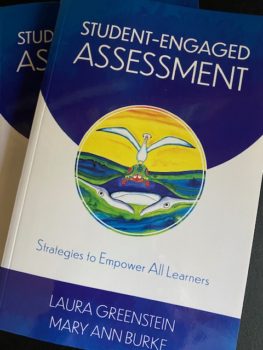 How Teachers Use Students to Assess Learning
How Teachers Use Students to Assess Learning
This post is third of a series based on excepts from my book on Student-Engaged Assessment: Strategies to Empower All Learners by Laura Greenstein and Mary Ann Burke (2020). You can purchase the book from Roman and Littlefield for charts, examples, and worksheets on how to engage students to become owners of their learning successes.
Example of How Academic Standards Are Applied to Individualized Student Assessed Learning
As teachers increase their use of students to assess their own learning, lesson plans can include the academic standards that will be used in various project-based learning activities. The table below illustrates how specific academic standards can be integrated in various subject areas. Once the standards and activities are defined, teachers can assess each students’ learning readiness. Additionally, students must clarify how each standard can support a learning intention. Once students define a learning intention relevant to specific standards, they are able to identify how they will demonstrate their learning outcomes and rely on their own selection of resources to support their learning successes. [Read more…]

Mary Ann Burke, Ed.D., Digital Education Expert, is a substitute distance learning teacher for Oak Grove School District in San Jose, California and the author of STUDENT-ENGAGED ASSESSMENT: Strategies to Empower All Learners (Rowman & Littlefield: 2020). Dr. Burke creates digital language arts and substitute teaching K – 12 activities for teachers and parents. She is the Cofounder of the Genparenting.com blog. Burke is the former Director II of Categorical & Special Projects for the Santa Clara County Office of Education that supports 31 school districts serving 272,321 students in Santa Clara County. She is also a previous Director – State & Federal Compliance for Oakland Unified School District, the former Director – Grantwriter for the Compton Unified School District, and was the initial VISTA Director for the Community Partnership Coalition in southern California. Much of her work focuses on creating innovative digital trainings and partnership programs for teachers and families to support students’ learning. These programs were featured as a best practice at a National Title I Conference, California’s Title I Conferences, AERA Conferences, an ASCD Conference, the NASSP Conference, and statewide educator conferences.